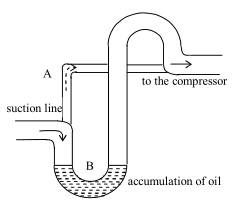Spark erosion is caused by a voltage discharge between the main bearing and journal surface. The cau...
cause of the potential is the development of a galvanic element between the ship’s hull, sea water,
and the propeller shaft/crankshaft.
The oil film acts as a dielectric. The puncture voltage in the bearing depends on the thickness of the oil
film. With increasing engine ratings, the specific load in the main bearing is increased. This will reduce the
oil film thickness, and enable the discharge to take place at a lower voltage level.
Since the hydrodynamic oil film thickness varies through a rotation cycle, the discharge will take place at
roughly the same instant during each rotation cycle, i.e. when the film thickness is at its minimum. The
roughening will accordingly be concentrated in certain areas on the journal surface. In the early stages, the
roughened areas can resemble pitting erosion. but later, as the roughness increases, the small craters will
scrape off and pick up white metal-hence the silvery white appearance.
Therefore, to ensure protection against spark erosion, the potential level must be kept at maximum 80
mV, which is feasible today with a high efficiency earthing device. If an earthing device is installed, its
effectiveness must be checked regularly. Spark erosion is only observed in main bearings and main bearing
journals.
参考解析:
1. According to the paragraph one, a voltage between the main bearing and journal surface is produced by____.
A. propeller rotation
B. leakage from M/E electric control unit
C. a galvanic element
D. friction between the main bearing and journal surface
2. ____engine ratings increase, ____the hydrodynamic oil film between the main bearing and journal surface is.
A. The lower/thinner
B. The higher/the thicker
C. The lower/thicker
D. The higher/thinner
3. When will the spark erosion take place on the journal surface during each rotation cycle?
A. when the film thickness is at its minimum
B. when the film thickness is at its maximum
C. when the engine is on its compression stroke
D. when the engine is on its exhaust stroke
4. During the engine room watch keeping, which equipment must be noted to ensure protection against spark erosion?
A. the antifouling plant
B. the earthing device
C. the main engine electric heating coils
D. the shaft generator


 百度扫一扫练题
百度扫一扫练题
 关注千题库公众号
关注千题库公众号








